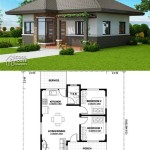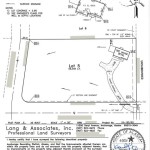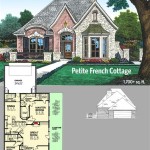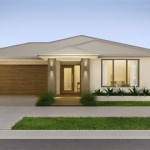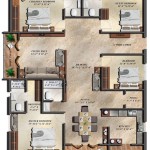Exploring the Benefits and Drawbacks of Underground House Plans
Underground house plans have gained popularity due to their unique advantages and futuristic appeal. These homes offer a distinct living experience and provide several benefits. However, they also come with their own set of challenges that should be carefully considered before embarking on such a construction project.
Benefits of Underground House Plans
1. Energy Efficiency:
Underground houses are naturally insulated by the surrounding earth. This provides excellent temperature regulation, reducing the need for heating and cooling systems. The consistent subterranean temperature helps maintain a comfortable indoor climate, resulting in significant energy savings.
2. Natural Disaster Resistance:
Underground homes are highly resilient to natural disasters. They are protected from extreme weather conditions such as tornadoes, hurricanes, and earthquakes. The surrounding earth acts as a buffer, absorbing the impact of these forces and minimizing damage to the structure.
3. Privacy and Security:
Underground houses offer a high level of privacy and security. They are secluded from the outside world, reducing noise and visual intrusions. Additionally, their hidden nature makes them less vulnerable to vandalism, theft, and other security concerns.
4. Unique Aesthetic Appeal:
Underground houses can be designed with innovative and architecturally striking features. The use of natural light, earth tones, and modern materials creates a distinctive and aesthetically pleasing living space that blends seamlessly with the surrounding environment.
Drawbacks of Underground House Plans
1. High Construction Costs:
Building an underground house is a complex and expensive undertaking. The excavation, earthwork, and structural reinforcements required for construction can significantly increase the overall project costs compared to traditional above-ground homes.
2. Limited Natural Light:
One of the challenges of underground houses is the lack of natural light. While skylights and light tubes can be installed, they may not provide sufficient illumination in all areas. This can impact the overall ambiance of the home and may require the use of artificial lighting.
3. Moisture and Humidity Control:
Underground structures are prone to moisture and humidity issues. Proper drainage systems and ventilation are crucial to prevent water accumulation and mold growth. This requires additional design considerations and ongoing maintenance to ensure a healthy and comfortable living environment.
4. Access and Accessibility:
Underground houses typically require ramps or elevators for access. This can present accessibility challenges for individuals with mobility issues. The location of the entrance and the presence of stairs or sloping paths should be carefully planned to ensure convenient and safe access.
Conclusion
Underground house plans offer a compelling alternative to traditional above-ground homes. They provide numerous benefits, including energy efficiency, natural disaster resistance, privacy, and unique aesthetics. However, it is essential to be aware of the potential drawbacks, such as higher construction costs, limited natural light, moisture control challenges, and accessibility considerations. Careful planning and addressing these aspects thoroughly are crucial for a successful and enjoyable underground living experience.

7 Amazing Facts About Underground Houses That Will Blow Your Mind

What Are Earth Homes Buildings For A Sustainable Future Redfin

Living Underground A Surprisingly Bright Idea Atlas Obscura

7 Amazing Facts About Underground Houses That Will Blow Your Mind

Locality Legality And Limiting Landscapes The Story Behind Switzerland S Villa Vals Archdaily

Will We Ever Live In Underground Homes

Hillside House Plans With Garages Underneath Houseplans Blog Com

Outrage The Flawed Premise Of Luxury Bunker Architectural Review

Deep Foundation Definition Its Various Types And Merits Demerits

Buildings Exploring The Unseen World Cnn
Related Posts


